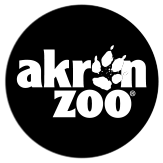BIRD UPDATE
July 1: Over the next couple of weeks, our remaining birds species will be returning to their public habitats, including the bald eagles, aviary and the condors. Our birds have been indoors for their safety due to highly pathogenetic avian influenza. At this time, our vet and animal care teams have deemed the risk of exposure low enough for all of our bird species to return outside.
We will continue to monitor data on this strain and are prepared to reinstate all safety precautions if cases begin to rise again. The health and welfare of our birds is our top priority, and we appreciate your patience during this time!
June 4: We’re excited to share that our penguins, Hyacinth macaws, snowy owls, red-breasted geese, white storks and guineafowl have returned to their outdoor habitat. Our flamingos will also be outside occasionally as their habitat gets an update. Our animal and vet care experts have been monitoring the data with this strain of highly pathogenic avian influenza, and the research shows that this strain is not likely to negatively impact these species.
The remainder of our bird species will continue to stay indoors or inside a protected habitat until risk of exposure is low. This is as a precaution for our birds’ safety as cases of avian influenza continue to be detected in Ohio. All of our birds remain healthy.
We know you love our feathered friends as much as we do. The health and welfare of our birds is our top priority. They will all return to their outdoor habitats as soon as the risk of exposure is low.
March 17: Many of our birds have temporarily moved indoors or inside a protected habitat. This is as a precaution for our birds’ safety as cases of highly pathogenic avian influenza have been detected in Ohio. Currently, all of our birds remain healthy.
There is no apparent risk to humans at this time. For our birds here at zoo, the risk comes from native birds who land during spring migration.
We know you love our feathered friends as much as we do. The health and welfare of our birds is our top priority. They will all return to their outdoor habitats as soon as the risk of exposure is low.
